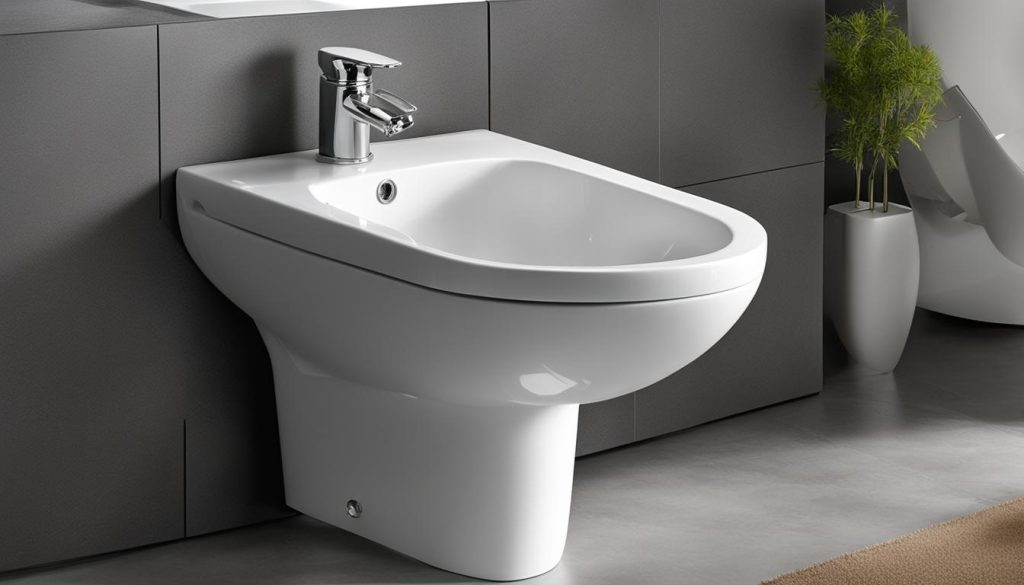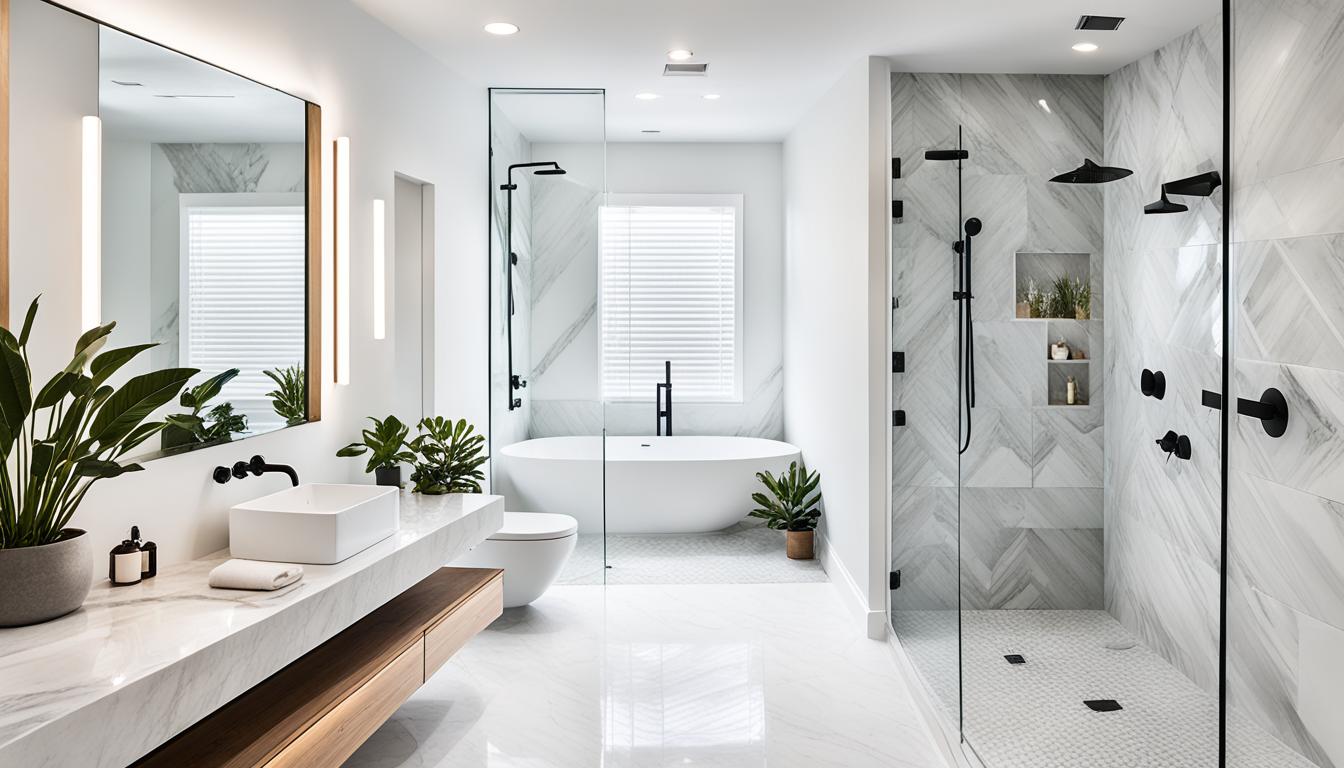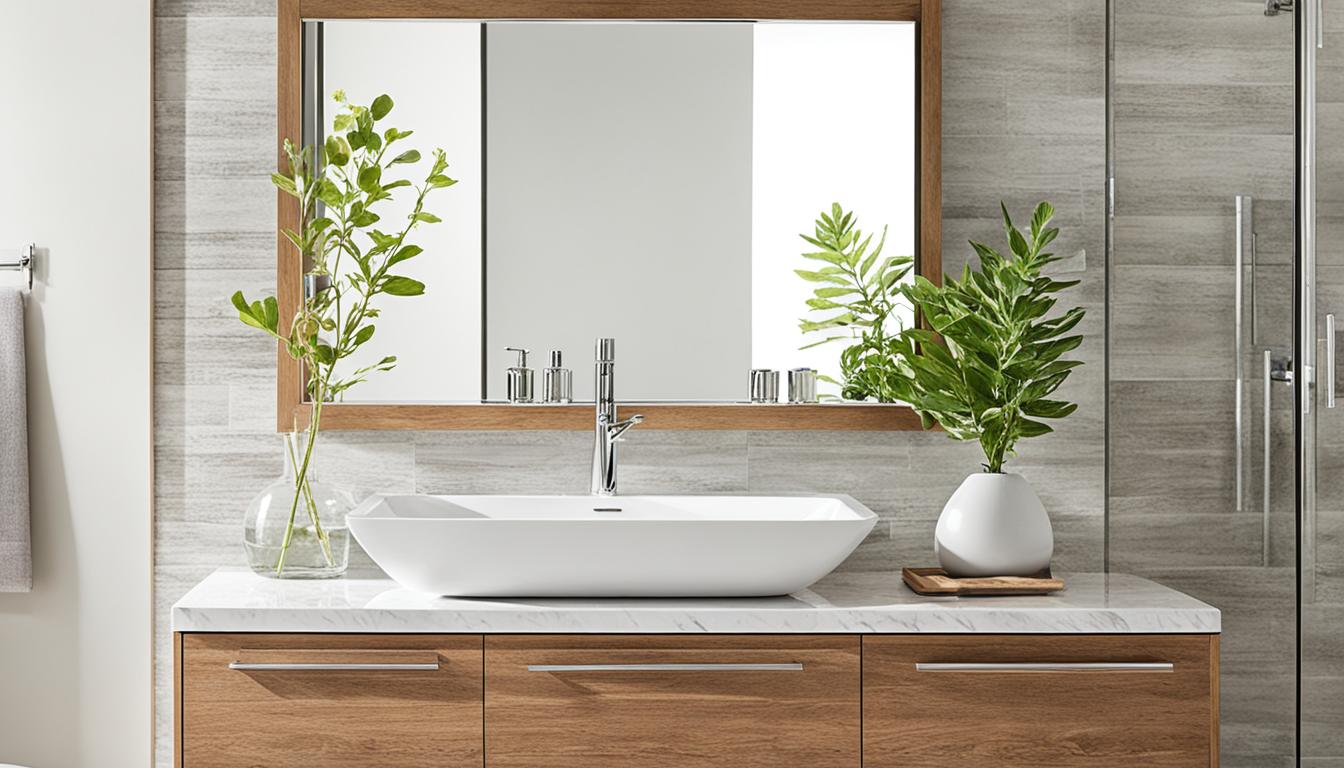cleanyourbutt.com and its partners may earn a commission if you purchase a product through one of our links
Welcome to our guide on bidet wiring and the need for a dedicated circuit. If you’re considering installing a bidet toilet seat, it’s important to understand the electrical requirements, circuit specifications, and power supply considerations. This article will provide you with the guidelines for bidet electrical installation and ensure your bidet seat is compliant with electrical codes. Let’s dive in!
Key Takeaways:
- Understanding bidet electrical requirements is crucial before purchasing and installing a bidet toilet seat.
- Most bidet seats do not require a dedicated circuit as long as there are no other heavy appliances active on the same circuit.
- Bidet toilet seats need GFCI-protected 3 prong grounded outlets with a minimum of 15 amps.
- Consider the power consumption of bidet seats, which varies depending on the type of bidet, tank type, or tankless.
- Ensure the bidet seat installation complies with electrical safety codes to guarantee proper functioning and safety.
Electrical Outlet Requirements for Bidet Toilet Seats
When installing a bidet toilet seat, it is essential to ensure that you have the appropriate electrical outlets to meet the specific requirements. Here are some key considerations:
GFCI Protection
Bidet toilet seats require GFCI-protected 3-prong grounded outlets. GFCI stands for Ground Fault Circuit Interrupter, which provides an added layer of safety by automatically cutting off power in the event of a ground fault. These outlets are commonly found in bathrooms and kitchens, where waterborne environments demand extra protection against electrical hazards.
Minimum 15 Amps
The outlets must have a minimum capacity of 15 amps to safely handle the power requirements of bidet toilet seats. This ensures that the outlet can handle the load without overloading or tripping the circuit breaker.
Bidet Cord Length
The cords on bidet toilet seats are typically around 4 feet long. To ensure a neat and proper installation, it is recommended to install new outlets on the wall behind the toilet. This placement allows for easy access and prevents cord tangles or strain.
Most bidet cords extend from the right-hand side when facing the toilet. However, it is worth noting that TOTO washlets have cords that extend from the left side, and the USPA 6800 has a cord extending from the center rear. Consider the cord placement of the specific bidet seat you intend to install.
Evaluating your Existing Outlets
| Outlet Type | GFCI Protection | Recommended? |
|---|---|---|
| Older Outlets | No | No |
| Newer Outlets | Yes | Yes |
In waterborne environments like bathrooms and kitchens, it is strongly recommended to upgrade to GFCI protected outlets. Although it may not be necessary for older outlets, ensuring the safety of your electrical system should always be a priority.
Remember to check your regional electrical code for any specific requirements or guidelines regarding bidet seat installation and electrical safety.
Power Consumption of Bidet Seats
When considering the power consumption of bidet seats, it’s important to understand that different models have varying wattage requirements. Bidet seats can be categorized into two types: tank type and tankless. Tank type bidet seats draw a maximum of 600W at their peak, while tankless bidet seats can draw up to 1400W at their peak.
However, it’s crucial to note that bidet seats only draw these high wattage numbers during an active wash cycle with maximum temperature settings. The majority of the time, bidet seats are in idle mode, consuming very low power. In fact, bidet seats have specially designed eco modes that further reduce power consumption during idle periods.
With bidet seats operating in eco modes, the power consumption is significantly reduced, making them more energy-efficient. This not only helps conserve electricity and reduce utility bills but also contributes to a greener lifestyle.

“Bidet seats have eco modes that significantly reduce power consumption during idle periods.”
Due to their low power draw during idle mode and the availability of eco modes, bidet seats do not typically require dedicated circuits. Unless there are other heavy appliances active on the same circuit, bidet seats can function efficiently without the need for additional electrical infrastructure.
Installation Considerations for Bidet Seats
When installing a bidet seat in your bathroom, it is essential to consider several factors to ensure a seamless and convenient experience. From the placement of electrical outlets to the location of the bidet seat itself, careful planning will make the installation process much easier.
One crucial aspect to consider is the length of the bidet’s electrical cord. Most bidet seat cords are approximately four feet long, so it is advisable to have an electrical outlet installed on the wall behind the toilet. This positioning ensures that the bidet seat can be easily connected without any strain or pulling on the cord.
It’s important to note that the majority of bidet cords extend from the right-hand side when facing the toilet. However, different brands and models may have variations in cord placement. Therefore, it’s recommended to check the specific bidet seat’s cord location to determine the most suitable outlet placement.
By carefully considering the outlet location and bidet seat placement during the installation process, you can ensure that the bidet’s electrical cord has sufficient length and reach to connect without any issues. This thoughtful approach will result in a tidy and organized bidet installation, enhancing both functionality and aesthetics.

| Installation Considerations for Bidet Seats | |
|---|---|
| Placement of electrical outlets | Install the outlets on the wall behind the toilet for easy access and connection to the bidet seat. |
| Location of bidet seat | Ensure the bidet seat is positioned in a convenient and comfortable location within reach of the electrical outlet. |
| Cord length and reach | Verify that the bidet seat’s electrical cord is long enough to connect without strain or pulling. |
Dedicated Circuit Requirement for Bidet Seats
In most cases, bidet toilet seats do not require a dedicated circuit. They can usually work fine on shared bathroom circuits since they are idle for the majority of the time. However, in older homes with outdated electrical standards, installing a bidet seat with a tankless water heater on a shared circuit with bathroom lighting can cause lights to flicker when the water heater is activated. While this is rare, it is recommended to have a dedicated circuit if there are concerns about circuit overload or flickering lights.
Why a Dedicated Circuit?
A bidet seat with a tankless water heater draws a significant amount of power during its operation. When such a bidet seat is connected to a shared circuit with other electrical devices, the simultaneous usage of high-powered appliances can lead to circuit overload. This can cause the lights in the bathroom to flicker or dim, indicating that the electrical circuit is struggling to carry the load.
Installing a dedicated circuit for the bidet seat ensures that it has a dedicated power supply at all times, reducing the risk of circuit overload and flickering lights. It provides a stable and consistent power source, eliminating potential disruptions or electrical issues that can arise from sharing a circuit with other devices.
Cost of Installing a Dedicated Circuit
The cost of installing a dedicated circuit for a bidet seat can vary depending on factors such as the location of the bathroom and the complexity of the electrical wiring. On average, the cost can range from $150 to $500, which includes the materials, labor, and any necessary electrical permits.
Benefits of a Dedicated Circuit
Having a dedicated circuit for your bidet seat offers several benefits:
- Reliable power supply: A dedicated circuit ensures that your bidet seat receives a consistent and uninterrupted power supply, reducing the risk of malfunction or performance issues.
- Mitigates circuit overload: By separating the bidet seat from other electrical devices, a dedicated circuit prevents circuit overload and reduces the chances of tripped breakers.
- Increased safety: Dedicated circuits are designed to handle higher electrical loads, minimizing the risk of fire hazards or damaging electrical equipment.
- Enhanced performance: With a dedicated circuit, the bidet seat can operate at its full potential, providing optimal performance and functionality.
Consult a Professional Electrician
If you are unsure about whether your bidet seat requires a dedicated circuit or if you need assistance with the installation, it is recommended to consult a professional electrician. They have the expertise to assess your electrical system, determine the requirements for your bidet seat, and ensure proper installation for optimal performance and safety.

Voltage Requirements of Bidet Seats
When considering the installation of a bidet seat, it is crucial to understand the voltage requirements to ensure compatibility with your electrical system. In North America, bidet seats typically operate on 110V, but it is important to check the specifications of the specific model you are interested in. International usage may require a different voltage, and certain bidet seat models are available in 220V to accommodate different regions.
Confirming the bidet seat’s electrical specifications is essential to avoid any issues with the bidet’s power supply and ensure a seamless installation experience. Mismatches in voltage can lead to power supply problems, potentially damaging the bidet seat or causing it to malfunction.
Always refer to the manufacturer’s documentation or consult with a qualified electrician to determine the bidet seat’s voltage requirements and ensure it aligns with the voltage available in your area.

| Bidet Seat Model | North American Voltage | International Voltage |
|---|---|---|
| Brand X Bidet Seat | 110V | 220V |
| Brand Y Bidet Seat | 110V | N/A |
| Brand Z Bidet Seat | 110V | 220V |
Here’s an example table showcasing different bidet seat models and their voltage requirements:
- Brand X Bidet Seat: North American voltage: 110V, International voltage: 220V
- Brand Y Bidet Seat: North American voltage: 110V, International voltage: N/A
- Brand Z Bidet Seat: North American voltage: 110V, International voltage: 220V
By reviewing the voltage specifications of bidet seats before making a purchase, you can ensure a smooth installation process and avoid any potential electrical compatibility issues.
Electrical Safety and Code Compliance for Bidet Seats
When it comes to installing a bidet seat, electrical safety and code compliance are of utmost importance. To ensure the safe and proper functioning of bidet seats, it is crucial to adhere to the electrical codes in your region.
GFCI (Ground Fault Circuit Interrupter) protection is strongly recommended for outlets in waterborne environments like bathrooms and kitchens. This protective measure helps prevent electrical shocks and ensures your bidet seat operates safely.
Electrical codes may vary based on regional requirements, but generally, for new construction, a 20amp circuit with at least a 15amp outlet is required. These codes help maintain the integrity of the electrical system and prevent overloading. It is essential to check your regional electrical code for specific guidelines and regulations regarding bidet seat installation and electrical safety.
By following electrical codes and guidelines, you can have peace of mind knowing that your bidet seat is installed safely and complies with the necessary electrical requirements. Protect yourself and your home by ensuring bidet electrical safety and code compliance.
FAQ
Does a bidet toilet seat need a dedicated circuit?
In most cases, bidet toilet seats do not require a dedicated circuit. They can usually work fine on shared bathroom circuits since they are idle for the majority of the time. However, in older homes with outdated electrical standards, installing a bidet seat with a tankless water heater on a shared circuit with bathroom lighting can cause lights to flicker when the water heater is activated. While this is rare, it is recommended to have a dedicated circuit if there are concerns about circuit overload or flickering lights.
What are the electrical outlet requirements for bidet toilet seats?
Bidet toilet seats require GFCI-protected 3 prong grounded outlets with a minimum of 15 amps. The cords on bidet seats are typically around 4 feet long, so it is recommended to install new outlets on the wall behind the toilet. Most bidet cords extend from the right-hand side, but TOTO washlets have cords that extend from the left side and the USPA 6800 has a cord extending from the center rear. While GFCI protection is not necessary for older outlets, it is strongly recommended in waterborne environments like bathrooms and kitchens. Check your regional electrical code for further details.
What is the power consumption of bidet seats?
Tank-type bidet seats draw a maximum of 600W at their peak, while tankless bidet seats draw up to 1400W at their peak. However, bidet seats only draw these high wattage numbers during an active wash cycle with maximum temperature settings. The majority of the time, bidet seats are in idle mode with very low power draw, especially when eco modes are active. Therefore, bidet seats do not require dedicated circuits unless there are other heavy appliances active on the same circuit.
What should I consider during bidet seat installation?
It is recommended to install new electrical outlets on the wall behind the toilet due to the cords on bidet seats being around 4 feet long. Most bidet cords extend from the right-hand side when facing the toilet, but there are variations depending on the brand and model. When planning the installation, consider the location of the outlet and the placement of the bidet seat. Ensure that the cords have enough length and reach to connect without any strain.
Do bidet seats have specific voltage requirements?
Unless otherwise specified, bidet seats for the North American market are typically 110V. International usage may require a different voltage, and some bidet seat models are available in 220V. It is important to check the specifications of the bidet seat to ensure it is compatible with the voltage available in your region.
What are the electrical safety and code compliance considerations for bidet seats?
GFCI protection is strongly recommended for outlets in waterborne environments like bathrooms and kitchens. Electrical codes may vary based on regional requirements, but generally, a 20amp circuit with at least a 15amp outlet is required for new construction. It is essential to check your regional electrical code for specific guidelines and regulations regarding bidet seat installation and electrical safety. Compliance with electrical codes ensures the safe and proper functioning of bidet seats.


